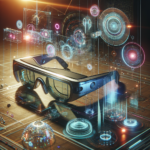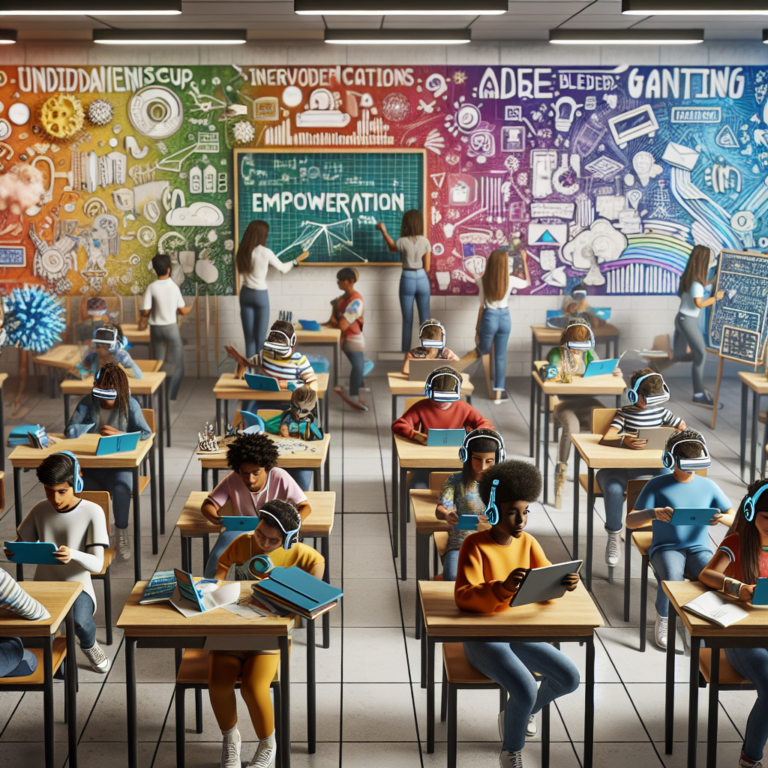Re-Imagining Learning: A New Era of Education Post-Pandemic 🧑🎓
The Transformative Opportunity of Unified Solutions
The COVID-19 pandemic has drastically altered the educational landscape, presenting a unique opportunity to reimagine learning in ways we never thought possible. As educators, administrators, and policymakers come together to navigate this new normal, the importance of collaboration around common solutions becomes increasingly clear. The classroom of the future must evolve to meet the diverse needs of students, ensuring that learning experiences foster engagement and creativity.
Igniting Student Creativity Through Technology 🎮
In today’s educational climate, traditional teaching methods often leave many students feeling disengaged. To address this gap, educational technologies, gaming, and interactive experiences have emerged as vital tools to foster creativity among learners. By integrating captivating digital content and gamified learning experiences, we can spark students’ interest and enhance their motivation to participate actively in their education.
- Interactive Learning: Tools like simulations, virtual labs, and educational games transform traditional lessons into dynamic learning adventures.
- Gaming Elements: Adding elements of gaming to educational content helps create a learning environment that students find appealing and relatable.
- Collaborative Experiences: Encouraging teamwork through educational technologies builds social skills and critical thinking.
Empowering Students with Personalized Learning
The modern classroom must recognize the need for personalized learning experiences where students have agency over their education. By offering tailored pathways that reflect individual interests and abilities, educators can create a more inclusive learning environment. This approach allows students to take ownership of their learning and engage meaningfully with the content.
Student Agency: The Key to Engagement
Giving students options in their learning empowers them to make decisions that resonate with their personal goals and interests. When learners can choose their projects, the subjects they dive into, or the technologies they use, they are more likely to stay engaged and retain what they learn.
Technology as a Supportive Learning Tool 📲
While technology plays a pivotal role in supporting educational growth, it is paramount that it never replaces the invaluable contributions of **teachers**. Tools such as Artificial Intelligence, virtual reality, and gaming can enhance the learning experience, provided they are grounded in relevant content. It’s critical that educators select technologies that align with their curriculum and help reinforce the material being taught.
- Interactive Platforms: Environments that allow for real-time feedback and collaborative projects keep students engaged.
- AI Personalization: AI can facilitate customized learning experiences, catering to various learning styles within the same classroom.
- Mixed Reality Applications: Tools like virtual and augmented reality provide immersive experiences that deepen understanding beyond traditional methods.
Involving Stakeholders in EdTech Development
The shift towards technology in education must involve both educators and families. By including these stakeholders in the development and selection of educational tools, we can ensure that the solutions meet real needs. Continuous feedback and iteration are key to improving these technologies to better suit users’ preferences and requirements.
Building Community Around Tech Success
A collaborative approach to EdTech development fosters a sense of ownership and community, encouraging parents and teachers to actively participate in the educational process. This kind of engagement can lead to better learning outcomes and a more supportive environment for students.
Learning Beyond the Traditional Classroom 🌍
The pandemic has shifted the perception that learning only occurs within the four walls of a classroom. We now understand that learning can happen anywhere, opening doors to alternative educational experiences and engagement opportunities for students. This realization encourages educators to explore innovative teaching methods that extend beyond traditional settings.
- Field Trips: Virtual field trips can allow students to explore the world from their homes while learning valuable lessons.
- Community Involvement: Partnering with local organizations integrates real-world experiences into the curriculum.
- Flexible Learning Environments: Encouraging students to study in various settings, like parks or libraries, can enhance their learning process.
The Evolution of the Teacher’s Role
In this new educational landscape, the role of teachers is evolving from a knowledge transmitter to a facilitator of interactive and visual learning experiences. The adoption of digital tools has created a shift towards models such as the Flipped Classroom, where educators guide discussions and problem-solving rather than simply delivering content. This transition focuses on enhancing collaboration and student engagement.
Opportunities Amid Challenges 🎉
While adapting to technology in education presents challenges—such as disparities in access to digital resources and the need for ongoing professional development—these hurdles also offer opportunities. By addressing these issues head-on, we can fundamentally transform the educational landscape and enrich the learning experience for all students.
- Bridging the Digital Divide: Schools can create programs to provide students with the necessary devices and internet access.
- Supporting Educators: Continuous training and resources empower teachers to effectively integrate technology into their classrooms.
- Inclusive Technology Adoption: Ensuring that all students benefit from learning technologies is crucial for equitable education.
Looking to the Future of Education 🌟
As we navigate the post-pandemic landscape, let’s harness the lessons learned to shape a brighter future for education. By embracing technology thoughtfully, encouraging creativity, and fostering collaboration among all stakeholders, we can create an educational environment that inspires and empowers every student to reach their full potential. The future of learning is exciting, and experience design in education is set for a transformative journey.




0 Comments